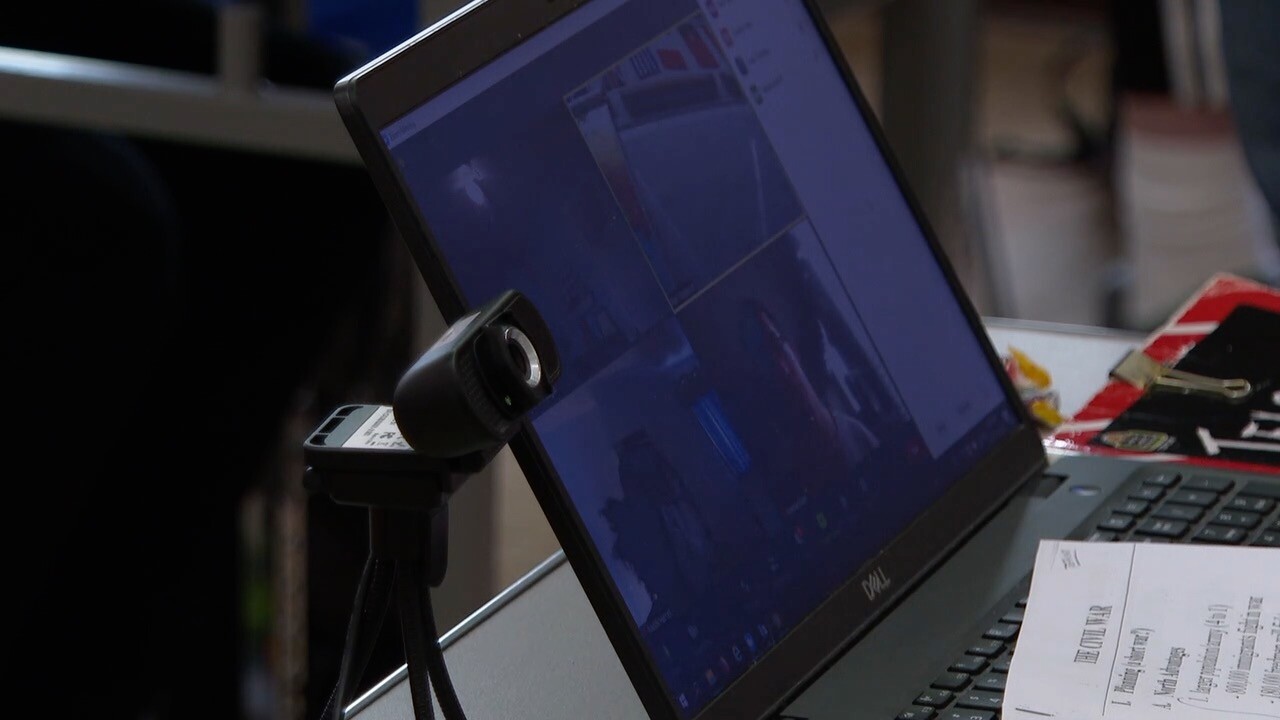CINCINNATI — College students – and their professors – found themselves forced online in spring 2020. Suddenly, every class was a virtual one and the idea of limited classroom time continued into the fall, as the pandemic dragged on.
WCPO surveyed local universities to see how online enrollment and virtual or hybrid class numbers changed since 2019. We found a steady, but not rapid, increase in online learning in our area.
"You can't just snap back to 2019 and expect this stuff to work," said Matthew Cecil, Northern Kentucky University's new provost. "We need to know our students better. That's the challenge for everyone in higher education."
Cecil started at NKU in highland Heights this summer and said he plans to spend the next six months or so meeting students and listening to what they want in terms of mix of in-person and online learning.

Data provided by NKU shows 4,500 students enrolled in accelerated online programs -- generally graduate or professional certifications -- for the fall, which equals out to one in four students at the university. This fall, 27 percent of other courses will be online, up from 18 percent in fall 2019.
"I do think it will stick," Cecil said. "I don't know exactly where the percentages will come down, but I think it is highly likely that we will see this kind of mix [going forward]."
Other local universities are seeing more mixed moves toward online learning.
Thomas More University in Crestview Hills told WCPO it will offer 114 courses online in the 2021-22 school year, up from 80 courses in the 2018-19 school year. Enrollment is climbing, too. 798 students have enrolled in online courses for the upcoming school year, compared to 683 in 2018-19.
Miami University is offering 724 online courses across all its campuses this fall, or 15.6 percent of courses, up from 528 in fall 2019, representing 11.1 percent. But that's down dramatically from the forced online presence of 2020, when Miami recorded 2835 online courses.

It will also offer 157 hybrid courses this fall, or about three percent of courses.
At Xavier University in Evanston, a spokesman said "nearly all" courses were returning to in-person, but did not have exact numbers readily available for fall 2021.
The University of Cincinnati also did not provide exact numbers to compare its fall online courses and enrollment, but said it offers "a good mix of online and in-person options."
UC noted, like Xavier, it was returning to a more traditional fall semester, but had an eye on online-only options moving forward.
As we currently look at the coming academic year, the course offerings for our traditional students will look similar to the 2018-2019 school year in terms of on-campus versus on-line. In addition, UC has been expanding enrollment in our UC Online programs which offer students the opportunity to complete their coursework and degree completely remotely.
So, if you thought the pandemic was pushing the end of the days of huge campus construction projects, new dorms, and a college building boom – think again.
"The reality, of course, is that there's always going to be an audience of students who want that on-campus residential experience," said NKU's Cecil. "You still have to attract that audience that wants the nice dorm rooms, the dining halls, all the activities you have on campus."
Cecil warned, though, that colleges and universities needed to meet more students – and prospective students – where they are.
"I need to know more about the students, and what their experiences were during COVID – and we know they weren't always what they wanted them to be – and what they need from us going forward," he said.
Cecil jokes that one day some university will make lots of money by figuring out a way to provide virtual courses in a similar space as newly popular workout programs, like Peloton.
Online-only universities fared particularly well during the pandemic.
Columbus, Ohio-based Franklin University has seen steady growth through the pandemic. According to data it provided to WCPO, its enrollment has grown from 4,333 in spring 2019 to 5,352 in spring 2021.
"The way the world is now, we're always moving," said K.L. Allen, president of Western Governors University Ohio. "It forced us to pivot and, luckily, we were already 100 percent online and students were able to continue to live their life and go to school."
WGU Ohio has seen enrollment grow more than 13 percent this year, and its graduation rate has increased 33 percent.

"[My students] always look on my wall – I have pictures of when I was in school, my first teaching job – and they always ask me questions like, 'That's you in that picture? Where did you go to school at?'" said Jaton Kershaw, a teacher at Cincinnati's Woodford Academy. "And I tell them, 'I didn't go to a traditional school where you would go into a building. I graduated from an online school.'"
Kershaw got her teaching degree online after she left the University of Cincinnati when tragedy struck and turned her life upside down.
In 2004, she was at the Black Family Reunion along the riverfront downtown when gunfire erupted. Kershaw was shot and spent time in the hospital and then at home recovering, dreading returning to school.
"I conquered my fear, I did," she said. "I had a lot of anxiety and didn't want to go into a lot of public places. I didn't trust large crowds."
The numbers show more people are taking Kershaw's approach to higher education – more options, less expensive, on their time.
"We now have lives we have to live, we have responsibilities as adults to take care of our family, we want the American Dream on our time," said WGU's Allen.
But there is not a dramatic shift happening to online courses, hastened by the pandemic. At least, not yet.





